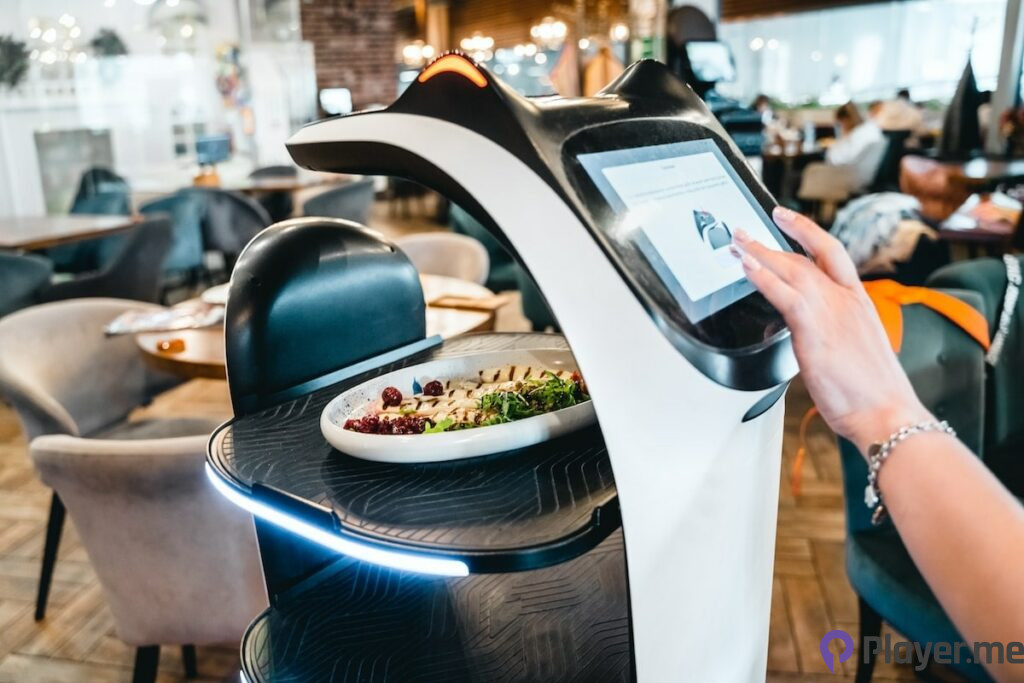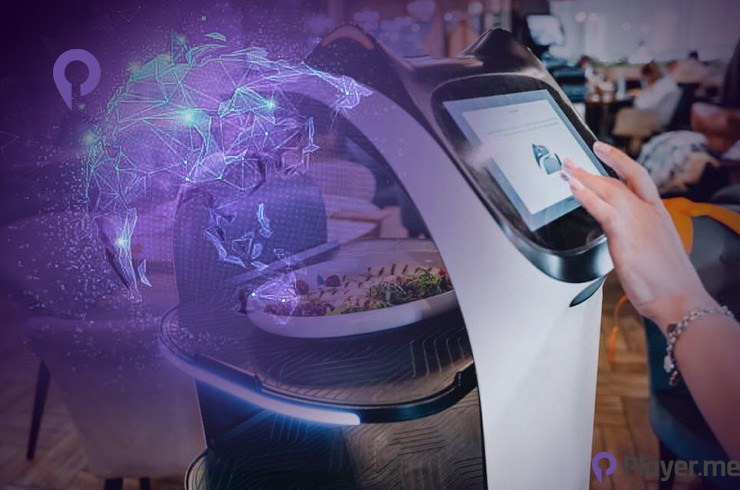Asia’s food service industry is experiencing a technological revolution driven by Artificial Intelligence (AI). Quick-Service Restaurants (QSRs) embrace AI-driven technologies to enhance customer experiences, streamline operations, and boost revenue. This shift towards AI integration is reshaping the dining landscape across the region, from ordering to delivery.
Also Read: Top 10 AI Startups Driving Promising Futures in 2024
AI Adoption in QSRs
According to Parthasaradhi Reddy, Consumer Lead Analyst at GlobalData, AI technologies are utilised in various aspects of QSR operations, including mobile apps, self-service kiosks, and innovative engagement platforms. “There is a growing adoption of digitalisation tools, including mobile apps and self-service kiosks, as well as innovative engagement initiatives, such as delivery platforms, to improve customer experiences,” he commented.
Tech-savvy Asian consumers, mainly Gen Z and Gen Y, are driving the demand for high-tech attributes in dining experiences. A recent GlobalData survey revealed that many Asian millennials and Gen Z consider high-tech features essential. This demand underscores the importance of integrating AI and technology to meet evolving consumer preferences within Asia’s food service industry.
Reddy also stated that “McDonald’s China, for instance, is testing RFID technology to reduce the time required for stocktaking, thus improving supply chain competency. On the other hand, Yum China rolled out an innovative app leveraging AI to provide insightful recommendations to customers while simultaneously being senior-friendly with an easy-to-use interface.”
Also Read: Mobile Technology and 5G Take Momentum in Asia Pacific
Integration of Technology
Tim Hill, Key Account Director at GlobalData Singapore, emphasises the role of technology in revolutionising every aspect of Asia’s food service industry, from food preparation to customer interaction and delivery. Integrating mobile apps, kitchen management systems, and AI-powered robots enhances the overall dining experience for customers.
According to Hill, “The integration of technology is designed to boost the evolution of Asia’s food service industry, overhauling every aspect, including food preparation, customer interaction, ordering, dining, and delivery experiences for customers and outlets. Technology can also help alleviate logistical challenges such as labour shortages in the industry.”
Skylark Group, Japan’s largest restaurant group, has deployed AI-powered robots across its outlets to address labour shortages and improve efficiency. These robots, developed by China’s PuduTech, can perform various tasks, including bussing tables and hosting, enhancing operational capabilities while maintaining service quality.
Economic Impacts
In the face of economic volatility, restaurants are turning to AI-based solutions to enhance guest experiences without increasing costs. AI-driven technologies offer cost-effective solutions for improving efficiency, reducing labour costs, and maintaining competitiveness in the market.
Also Read: Grab, Uber’s Southeast Asian Rival, Debuts Web3 Services with Circle
Regional Trends of AI Evolution in Asia’s Food Service Industry

Southeast Asia is emerging as a gastronomic hub with a growing emphasis on local and international cuisines. Consumers in the region are increasingly dining out as a means of socialising and bonding over quality meals. With rising disposable incomes and exposure to foreign cultures, there is a growing demand for international cuisines, leading to more international food players entering the market.
Delivery is witnessing rapid growth in Southeast Asia, fueled by technological advancements and consumer demand for convenience, thereby reshaping the landscape of Asia’s food service industry. Third-party delivery services like Grab Food, Foodpanda, and Deliveroo are gaining traction, offering consumers a convenient option for meal solutions amidst busy schedules and traffic challenges.
Consumer Preferences and Habits

Southeast Asian consumers increasingly value dining out as a means of socialising and spending quality time with loved ones. Eating out is no longer reserved for special occasions but has become a regular part of lifestyle choices. In countries like the Philippines, where family-oriented culture prevails, dining out is deeply ingrained in social gatherings and celebrations.
Moreover, Malaysians have embraced the trend of hunting for food deals together as part of the shopping and dining experience, showcasing a collective enjoyment of exploring culinary options. This shift in consumer behaviour reflects the changes where affordability and variety play significant roles in decision-making and shape the trajectory of Asia’s food service industry.
Read Next: UN Flags Tether’s USDT For Fuelling Crime In Southeast Asia
Globalisation of Cuisines
The globalisation of cuisines has transformed the culinary scene in Southeast Asia, with consumers increasingly seeking authentic foreign foods. Thai consumers, for example, have a penchant for Japanese, Indian, and Korean cuisine, driving the demand for international food brands in the region. Additionally, the popularity of contemporary fusion cuisines, such as Viet Thai and Malaysian Western, highlights the diverse culinary preferences of consumers in the area.
The rise in outbound travel from Southeast Asia has exposed consumers to foreign cultures and flavours, increasing demand for international cuisines at home. This trend has prompted more international food players to enter the Southeast Asian market, catering to both local consumers and tourists and contributing to the dynamic growth of Asia’s food service industry.
Closing Remarks
Integrating AI and technology is revolutionising Asia’s food service industry, enhancing customer experiences, streamlining operations, and driving innovation. As consumers continue to demand convenience and quality, AI-driven solutions and delivery services are expected to play a central role in shaping the future of regional dining experiences. Moreover, evolving consumer preferences and habits and globalisation trends are reshaping the food service landscape, offering diverse dining options for consumers in Southeast Asia.
Read more AI news and updates on Player.me at https://player.me/category/ai/.
Author Profile
Latest entries
 GAMING2024.06.12Top 4 Female Tekken 8 Fighters to Obliterate Your Opponents in Style!
GAMING2024.06.12Top 4 Female Tekken 8 Fighters to Obliterate Your Opponents in Style! NEWS2024.03.18Elon Musk’s SpaceX Ventures into National Security to Empower Spy Satellite Network for U.S.
NEWS2024.03.18Elon Musk’s SpaceX Ventures into National Security to Empower Spy Satellite Network for U.S. GAMING2024.03.17PS Plus: 7 New Games for March and Beyond
GAMING2024.03.17PS Plus: 7 New Games for March and Beyond GAMING2024.03.17Last Epoch Necromancer Builds: All You Need To Know About It
GAMING2024.03.17Last Epoch Necromancer Builds: All You Need To Know About It





